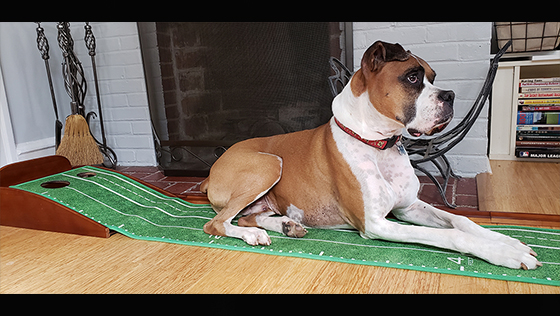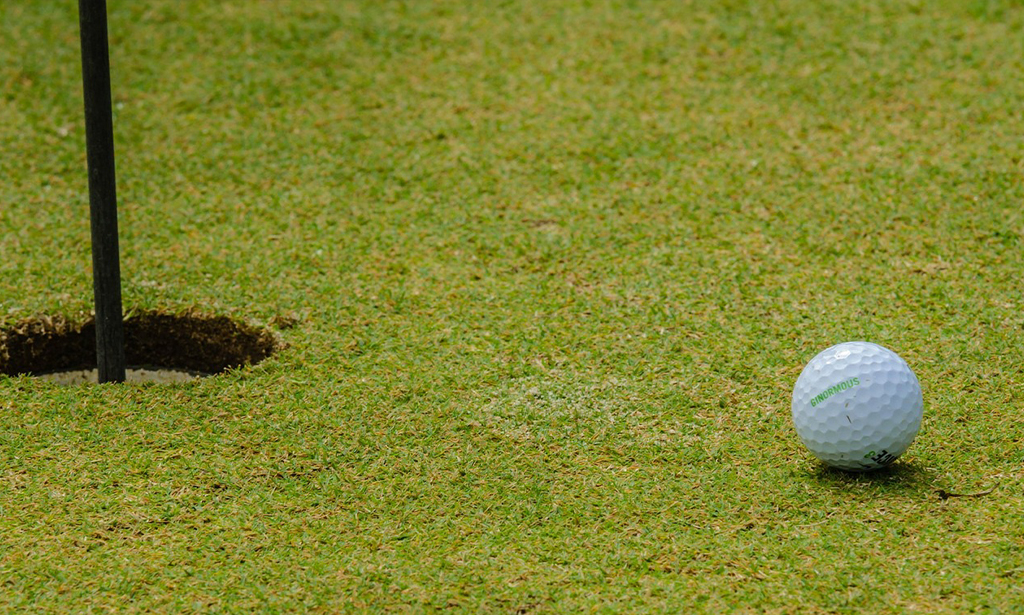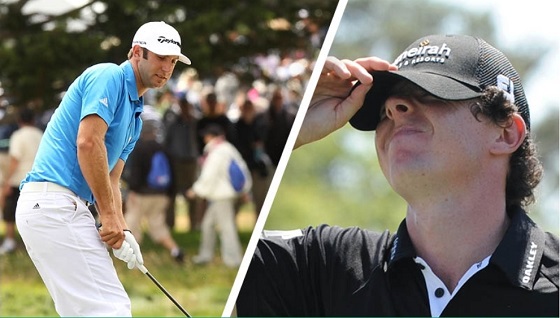Blog
7 Things We Learned From This Year’s Ryder Cup
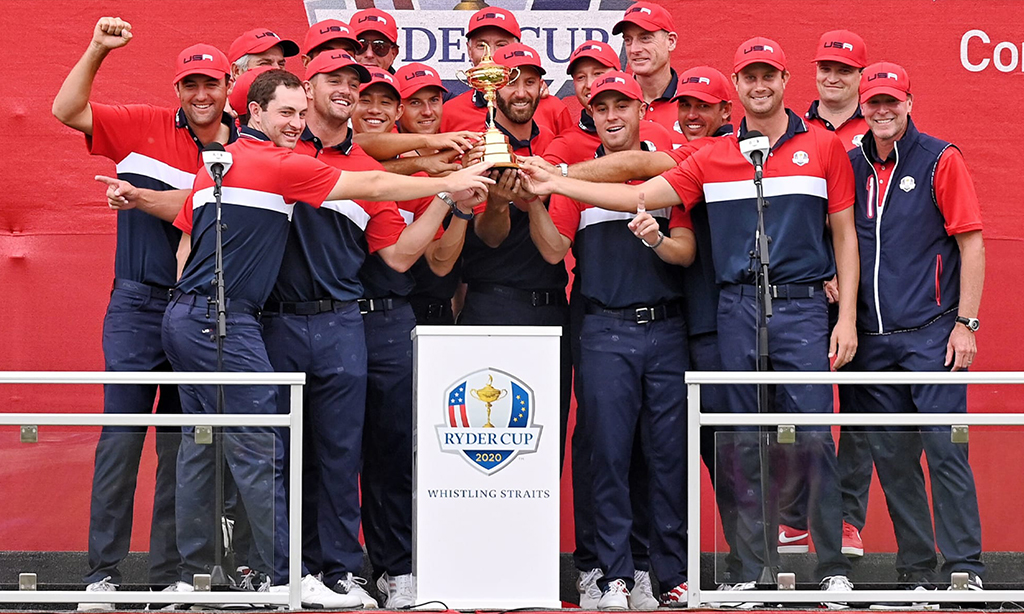
The United States clinched the 2021 Ryder Cup on Sunday after rookie Collin Morikawa secured the final half-point to get to a 19-9 victory, which is the largest margin of victory in Ryder Cup history since the 28-point format came about. Read that again! It is not a typo…
It’s also the first time since 1979 and 1983 that Team USA won back-to-back home Ryder Cups after winning in 2016 at Hazeltine. The Americans lost in 2018 in France and seven of the last 10 Ryder Cups against Europe, so this historic & dominant victory just may have changed the tide in the rivalry.
Here are our top 7 takeaways from this year’s Ryder Cup
Spanish Armada is Real
A big part of Ryder Cup history for Europe has been the play of several Spanish golfers. Starting with the legendary Seve Ballesteros and later Jose Maria Olazabal. Now, Jon Rahm and Sergio Garcia seem to have assumed that role. Rahm & Garcia were near unstoppable as a team this past week at Whistling Straights. Sergio became the all-time leader in matches won at the Ryder Cup.

He secured his 24th career match victory (passing Faldo with 23), however, I bet if you were to ask Sergio, he would call that a hollow victory. Rahm, the reigning world #1, secured 3.5 points in his 5 matches. For the most part… they were the lone bright spot for the Euros this year.
Rookies Rout
6! That’s right count em’…6 rookies were on the US Ryder Cup team this year. AND they demonstrated that a changing of the guard is on the horizon if not already onshore. Really, if I am being honest, they showed up in a HUGE way. I was apprehensive that our US team could hang with the veterans on the Euro squad. Boy was I wrong. Not only did they hang, they broke records!

Records that encompassed teams with names like Tiger, Duval, Phil, etc… The six rookies mark the most on one U.S. team since 2008, when the U.S. won at Valhalla Country Club. Four of our 2021 team rookies headed into Sunday with unbeaten records: Collin Morikawa (3-0-0), Xander Schauffele (3-0-0), Patrick Cantlay (2-0-1), and Scheffler (1-0-1). Scheffler and Morikawa were the only two rookies who went undefeated in their Ryder Cup play, and they arguably had the two most important victories on Sunday.
The young talent on the American side was simply too tough and too long for the veteran European team. It was an absolute onslaught! Not to mention that this was one of the youngest American Ryder Cup teams ever, with an average age of just 29 years old. The Americans didn’t lose a session for the first time in 44 years. They had the best team on paper. They played even better on grass.
The home field advantage was evident from the get-go
Lets be real, I found myself longing for the chants of “Ole’…Ole’ Ole’ Ole’…Ole’…Ole’”. That atmosphere creates such a buzz and seemed to be missing this year. With that, the US squad possessed a substantial home-field advantage. The sea of red that fills the galleries every time the United States hosts the Ryder Cup had far fewer European blue dots than usual this year.
“You only have to look around and all the grandstands are red,” Europe’s Ian Poulter said. “Everything that you look at, the fans, 98% are obviously going to be U.S. fans this week.”

WHY: Pandemic-related travel restrictions gave the U.S. a far bigger edge in fan support than the home team normally receives. European residents were not permitted to fly directly to the United States due to the pandemic. The U.S. announced 5 days before the event that it would allow foreigners to fly into the country if they have proof of vaccination and a negative COVID-19 test. But here’s the rub… those changes don’t take effect until November.
That meant fans living in Europe who wanted to watch the Ryder Cup in person had to take indirect routes. For instance, if you live in England, you would have to fly into Mexico and spend two weeks there. Then travel from Mexico to Wisconsin. Call me crazy, but as much as I love my squad, I am not sure that would be in the cards for me!
Brooks Koepka goes crazy, curses at Ryder Cup rules officials
Even while piling up points and producing one of its best days in recent Ryder Cup history, the American team’s performance was marred by a couple of salty moments of questionable behavior on Saturday at Whistling Straits.
Brooks turned into a proverbial “Karen” on two rules officials, cursing at them on the 15th hole during his Saturday morning foursome match alongside Daniel Berger against Spaniards Jon Rahm and Sergio Garcia.
The incident occurred with the Brooks & Berger 1-down with 4 holes to play. Berger’s errant second shot landed in a bunker to the right of the fairway. When Koepka, who was hitting next, arrived and surveyed the lie he brought in a rules official to ask for free relief. Koepka argued that there was a drain in front of the ball that he said would interfere with his swing. To be fair it did appear to be some unusual ground conditions.
“I don’t think it’s going to interfere with the area of your intended swing,” said David Price, the rules official.
“You don’t think my club might hit right there?” Koepka said, pointing downward. “Have you ever seen me hit a ball? There was a root that far down a couple of weeks ago.’’
Brooks was heard saying prior to the shot “I don’t physically see how you can make a swing and not at some point have this impact or this impact your club,”
“If I break my wrist, this is on [expletive] both of you.” He dropped the F-Bomb!
The officials ultimately disagreed, and Brooks had to hit the shot as it lied. He striped it! It hit the green and it rolled up to 25 feet.
Here’s the deal Brooksy, you may have had an argument. Even Sergio was on sight and seemed to agree that relief might be warranted. He then spit out his water when he heard the interaction between the officials and Brooks. Bottom line, the official ruling was given. Cussing them out will not help the situation. Right or wrong! Hit the shot or take an unplayable. Simple as that.
Spieth hit arguably one of, if not the greatest, shot on the 17th I have ever seen
It didn’t take long for Whistling Straits to produce a signature shot in the Ryder Cup. Unfortunately for Jordan and JT, it didn’t help them in a 3-up loss to Jon Rahm and Sergio Garcia.
Here’s the shot in his words: “It was kind of one of those shots you practice as a kid for fun,” Spieth said of his shot from a wildly uneven lie that sent him careening down a hill and nearly into taking a plunge into Lake Michigan.”
Two holes down with two to play, Thomas hit his tee shot on the par-3 17th hole to the right of the green, only to watch as it bounced left and shot across the green and down a nearly vertical slope toward Lake Michigan.
The ball ended up lodged in deep rough on a ridge about 10 feet high. Spieth studied it a long time before pulling out a wedge and taking a wild swing at the ball, which somehow plopped onto the green about five feet from the hole.
The momentum from Spieth’s swing sent him falling backward down the slope, and he nearly ran backward as he tried to steady himself before going too far and ending up in the lake.
“I don’t think I exaggerated that fall,” Spieth said. “Once I started moving I had to keep moving until I found a flat spot.”
If you were under a rock this weekend or somehow didn’t see the miraculous shot…you have to see it with your own eyes to believe it! I would give him 5 large buckets of balls and I would lay 5-1 odds he doesn’t get another even remotely that close!
Bryson did not disappoint
Before the Ryder Cup, we were not sure if we were team Brooks or team Bryson. Brooks is a terminator and Bryson is a character. After watching this weekend, I have to admit, Team Bryson closed the gap significantly. It was awesome when he drove the green on #1 and eagled it during the Sunday singles match.
Yeah, he took down the Ryder Cup GOAT – Sergio Garcia. But the #6 tee is what ultimately won us over. Bryson and his caddie were trying to decide between driver and 3-wood. He was worried he would drive the ball over the green on the 350-yard hole. That’s right, he had to back off the driver and decided instead to hammer a 3 metal on a 350-yard hole. When he puts his driver back in the bag, the crowd started to murmur.
Bryson then loudly said – “Easy Guys, I am still going for the green. Calm down!” Awesome! Arguably the biggest round of his life and he is cracking jokes with the crowd. Golf needs more guys like him. Sure…guys like Brooks, DJ, Xander, and Collin are great golfers but they can be a little predictable/boring! Thanks, Bryson. I think it’s safe to say that you won me and millions of other golfers over this past weekend.
DJ settles the score at whistling straights
Dustin Johnson joins an incredibly exclusive group of players who have taken five wins out of five at a Ryder Cup (100% match victory!) DJ had been named as the ‘elder statesman’ in the USA camp, being the oldest player in the team at 37-years-old.

However, after his 1-up victory against Paul Casey, Johnson joined Francesco Molinari and Larry Nelson as the only players in the modern Ryder Cup era to go 5-0.
In 1967, Arnold Palmer and Gardner Dickinson also achieved 5-0, but that was against Team Great Britain & Ireland.
Dustin was making the short stroll from the 10th green to the 11th tee at Whistling Straits when the galleries on either side of the narrow path began roaring: “MVP! MVP! MVP!” They were not wrong!
Eyes straight ahead, impassive as ever (Bulletin), Johnson deserved the chants but barely acknowledged them. Somewhere deep down, though, he had to be smiling. This is what people mean when they say revenge is best served cold.
On the very same course where 11 years earlier Johnson lost a shot at his first major championship, he won all five of the matches he played and led a young U.S. Ryder Cup team to its most lopsided victory ever over Europe. That the oldest player on the squad also turned out to be the best…made it just that much sweeter. Way to go DJ!
Blog
Sustainability in Golf: The Future of Eco-Friendly Greens
Read about the environmental impact of golf courses.

Golf, a sport often associated with pristine, manicured greens and lush landscapes, isn’t historically perceived as eco-friendly. However, with growing concerns about climate change and sustainability, the golf industry is steadily transitioning towards more sustainable practices. This article will explore how golf courses around the world are becoming greener and more eco-friendly while maintaining their appeal to golf enthusiasts.
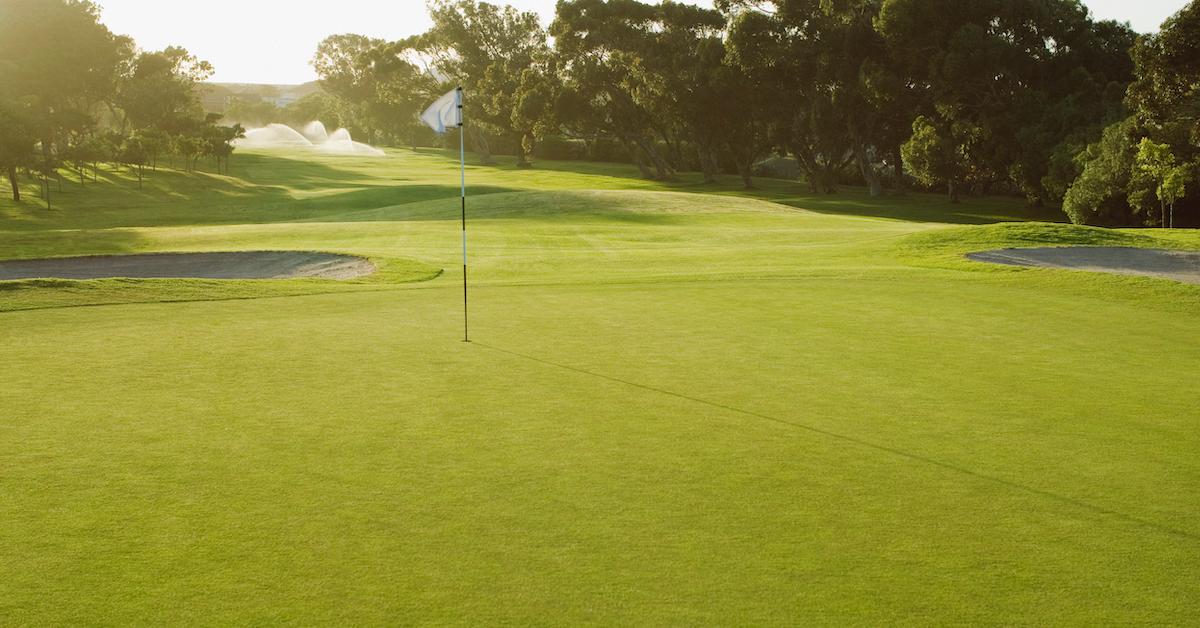
The Environmental Impact of Golf Courses
Golf courses traditionally use extensive resources, including water, pesticides, and fertilizers, which can have detrimental effects on the environment.
-
-
- Water Usage: Maintaining the verdant landscapes of a golf course requires enormous amounts of water. This is particularly concerning in regions where water scarcity is a significant issue.
- Pesticides and Fertilizers: To keep golf courses lush and free of pests, large amounts of chemicals are often used. These substances can seep into the ground, polluting water sources and harming local wildlife.
- Habitat Disruption: Golf courses often displace natural habitats, upsetting local ecosystems and reducing biodiversity.
-

Green Initiatives in Golf: Sustainability on the Fairways
Recognizing the environmental impact, many golf courses are now implementing sustainable practices to reduce their ecological footprint.

Water Conservation
Water conservation is a significant focus in eco-friendly golf course design. Methods employed include:
-
-
- Recycled Water: Many golf courses are now using recycled water or rainwater for irrigation, significantly reducing the use of freshwater resources.
- Drought-resistant Grass: Some courses are opting for drought-resistant varieties of grass that require less watering.
- Irrigation Technology: Advanced irrigation systems can efficiently distribute water, minimizing waste.
-

Reducing Chemical Usage
Reducing the use of harmful chemicals is another crucial step towards sustainability in golf. This can be achieved through:
-
-
- Organic Fertilizers and Pesticides: Many golf courses are switching to organic alternatives, which are less harmful to the environment.
- Integrated Pest Management: This approach focuses on long-term prevention of pests through biological control and habitat manipulation, reducing the need for chemical pesticides.
-

Preserving Local Habitats
Golf courses are increasingly being designed to coexist harmoniously with local ecosystems. This involves:
-
-
- Preserving Natural Features: Instead of altering the landscape to fit the course, designers are now incorporating existing natural features into the design.
- Creating Wildlife Habitats: Some golf courses are creating habitats for local wildlife, promoting biodiversity.
-
Case Studies: Sustainable Golf Courses Around the World
There are several golf courses worldwide that serve as excellent examples of sustainability in the industry.
- Pebble Beach Golf Links, USA: This renowned golf course uses recycled water for irrigation, reducing its freshwater use by 50%.
- St Andrews Links, Scotland: Known as the “Home of Golf”, St Andrews Links has implemented an extensive environmental management plan, including water conservation, habitat protection, and the use of organic fertilizers.
- Vineyard Golf Club, USA: This golf course in Massachusetts is one of the first to become fully organic, using only organic fertilizers and pesticides.
The Future of Sustainable Golf
The golf industry’s move towards sustainability is not just about eco-friendly practices on the course. It’s also about educating players and visitors about the importance of sustainability, thus promoting a culture of environmental consciousness.
While the transition to greener practices may be challenging, the benefits are immeasurable. Sustainable golf courses not only help protect the environment, but they can also enhance the playing experience, offering golfers the chance to play their favorite sport while surrounded by thriving, natural landscapes.
In conclusion, as awareness of environmental issues continues to grow, the question of “how green can the greens get?” is being answered by golf courses worldwide. Through innovative practices and a commitment to sustainability, the future of golf looks set to be greener than ever. As players, supporters, and enthusiasts of the sport, we can all contribute to this positive change by supporting golf courses that prioritize sustainability and by advocating for green practices within the golfing community.
Blog
The Golfer’s Holiday Hint-Dropping Guide
Your spouse thinks you want socks. You want a new driver. Here’s how to fix that.

Because subtlety is overrated when there’s a new driver on the line
Your spouse thinks you want socks.
Your kids think you want a tie.
Your mother-in-law is convinced you’d love another sweater with a reindeer on it, even though you’ve worn the last three exactly never, and everyone knows it, but somehow this year will be different.
It won’t be.
Here’s the problem. You want golf stuff. They don’t know what golf stuff means. You say “rangefinder” and they hear “robot finder.” You mention “premium golf balls” and they think all golf balls are the same, which is adorable but wrong, and you can’t exactly explain that without sounding like a crazy person who cares too much about dimple patterns.
So you need a strategy.
Not a subtle one either. Forget dropping hints like breadcrumbs. Drop them like anvils. We’re talking about a systematic campaign of suggestion, repetition, and strategic device-leaving that would make Madison Avenue jealous.
The Laptop Strategy (For the Tech-Savvy Golfer)
Leave your laptop open. Always. But not to just anything.
Open to golf retailer websites with items in your cart. Specific items. With the size, color, and model number clearly visible. And here’s the key – leave it open on the kitchen counter where your spouse makes coffee, because everyone looks at screens while waiting for coffee, it’s basically a law of physics at this point.
Do this for three weeks straight. Different items, same cart. They’ll get the message. And if they don’t, you’ve got a backup plan because you can just buy it yourself on December 26th when everything goes on sale.
The Casual Mention Method
This requires finesse.
Not too much though.
The goal is to work golf gifts into every conversation without seeming obsessed, which you are, but they don’t need to know that. Your daughter mentions her science project? “Speaking of projects, I’ve been thinking about upgrading my wedges.” Your son talks about his basketball shoes? “Funny you mention shoes – golf shoes with better traction would really help my game.” The mailman asks how you’re doing? “Great, though I’d be better with a new putter.”
Is this overkill? Maybe. Will it work? Absolutely.
The Magazine Massacre
Buy every golf magazine on the newsstand. Dog-ear the pages. Circle items in red pen. Write notes like “This would be perfect!” and “Honey, look at this one!” and leave them everywhere – the bathroom, the nightstand, the kitchen table, the car, their car, basically anywhere someone might sit for more than thirty seconds.
When they ask why there are seven golf magazines in the living room, just smile and say you’re “doing research.” Research for what? They won’t ask. They’re too busy looking at all those circled items with price tags helpfully highlighted.
The Strategic Screenshot
Text them screenshots. Daily.
“Look at this cool driver!” Send.
“These gloves are on sale!” Send.
“Remember when I mentioned wanting new golf shoes? These are the ones.” Send with three heart emojis because you’re not a monster, you still care about the relationship, you just also care about having the right equipment to shave three strokes off your game.
It’s called balance.
The Gift List That’s Not a Gift List
Create a shared note on your phone called “Gift Ideas” and fill it exclusively with golf items. When they ask what you want for Christmas, just say “Oh, I don’t know, I’m easy to shop for!” and then casually mention you made a little list of ideas, you know, just in case they needed inspiration, no pressure, but it’s organized by price range and includes links.
This works because you’re giving them exactly what they want – a clear shopping list – while maintaining the illusion that you’re being flexible. You’re not. But they don’t need to know that until after the presents are wrapped.
The Buddy System
Recruit your golf buddies. Have them “accidentally” call when your spouse is around. Make sure they loudly discuss the new equipment they just bought and how much it’s improved their game. Your spouse will hear. They’ll connect the dots. And if they don’t, have your buddy call again tomorrow. And the next day. Eventually, either your spouse will buy you golf stuff or they’ll buy you a different phone number, and honestly, both outcomes have their merits.
The Amazon Wish List Blitz
Create an Amazon wish list. Share it with everyone. Your spouse, your kids, your parents, your siblings, your coworkers, that guy you met at the driving range once, everyone.
Put forty items on it. Thirty-eight should be golf-related. The other two? A book and a candle, just so you seem reasonable and well-rounded, which you’re not, but again, they don’t need to know that.
Update it weekly. Add reviews in the comments like “Would really help my slice” or “These are the exact ones my pro recommended.” Make it impossible for them to buy anything else because everything else looks boring compared to golf equipment that promises to transform your game, which it might not, but the promise is what matters here.
The Direct Approach (For the Brave)
Just tell them.
Seriously.
Sit them down. Look them in the eyes. Say “I want golf stuff for Christmas. Specifically, I want this driver, these balls, and this rangefinder. Here are the links. Here are the specs. I’ve made it as easy as possible. Thank you for listening to my TED talk about my golf needs.”
Will they appreciate the honesty? Probably. Will you get what you want? More likely than if you kept hoping they’d telepathically understand that you need a new sand wedge because the grooves on your current one are worn down and it’s affecting your bunker play, which is already bad enough without equipment issues.
The Follow-Up Campaign
Don’t stop after dropping hints. Follow up. “Did you see that text I sent about the driver?” Ask during dinner. “Remember those golf shoes I mentioned?” Ask during breakfast. “Still thinking about that rangefinder.” Say it to no one in particular while watching TV.
Repetition is your friend. Marketing people know this. Politicians know this. Now you know this. Say it enough times and it stops being a hint and starts being a fact – you want golf stuff, they know you want golf stuff, and somewhere in the back of their mind, they’re starting to accept that golf stuff is happening this year.
The Backup Plan
Here’s the truth – they might still get it wrong. They might buy you golf-themed pajamas when you wanted golf balls. They might get you a gift card to a mini-golf place when you wanted a membership to a real course. They might wrap up golf socks, which are fine, but they’re not the GPS watch you’ve been talking about since July.
It’s okay. Say thank you. Mean it. Then on December 26th, hit those post-Christmas sales like a bargain hunter who knows exactly what they want and has been planning this shopping trip since Thanksgiving.
Because you have been.
And that’s fine. Golf equipment is expensive. If waiting one more day means you can get 40% off that driver you’ve been eyeing, that’s called being financially responsible. Your spouse will appreciate it. Eventually. After you explain why you needed three new wedges when you already have wedges.
“The grooves,” you’ll say.
They won’t understand.
But you’ll have new wedges.
The Real Gift
Look, here’s what matters. The holidays aren’t really about getting the perfect golf equipment, even though that would be nice, and you’ve spent considerable mental energy making sure everyone knows exactly what you want.
The holidays are about spending time with people you love. Even if they buy you reindeer sweaters. Even if they think all golf balls are the same. Even if they wrap up golf socks when you desperately need new grips for your irons.
They’re trying. That counts for something.
But also, leave your laptop open to that golf retailer website. Just in case. Because trying is good, but specific product links are better, and you didn’t make it this far in the season without having a solid Plan B.
Happy holidays. May your drives be long, your putts be true, and your gift-givers be observant enough to notice the forty-seven hints you’ve dropped since October.
And if all else fails?
There’s always next year.
Blog
Unveiling the History and Symbolism of Iconic Golf Trophies
Golf is a sport steeped in tradition, prestige, and class. From the lush greens of the course to the meticulously designed clubs, each aspect of the game exudes a sense of history and elegance.
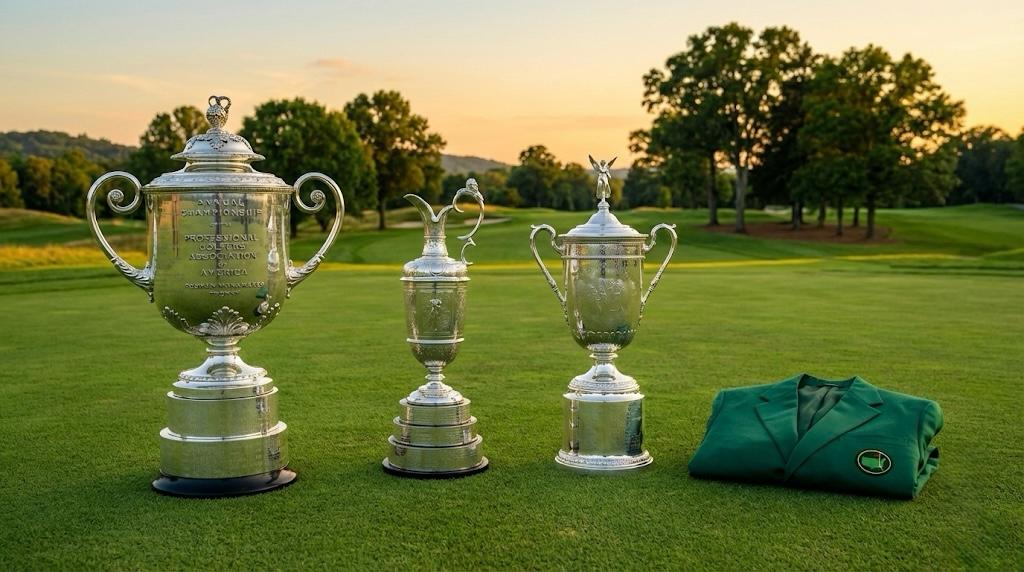
Golf is a sport steeped in tradition, prestige, and class. From the lush greens of the course to the meticulously designed clubs, each aspect of the game exudes a sense of history and elegance. Among these elements, golf trophies – the coveted prizes of the tournament – hold a special place. These iconic awards not only represent the winning golfer’s skill and determination but also carry a rich history and meaningful symbolism. In this article, we’ll delve into the story behind some of the most iconic golf trophies and what they symbolize, offering a unique perspective on this beloved sport.
The Claret Jug: The Open Championship
The Claret Jug, officially known as The Golf Champion Trophy, is awarded to the winner of The Open Championship, one of the four major championships in professional golf. The trophy, first presented in 1873, replaced the original prize of a red leather belt with silver buckle.
Its design is based on the medieval ‘claret jugs’ used to serve wine. The symbolism here lies in the association of the jug with a time-honored tradition, reflecting the essence of the tournament itself. The names of all the previous winners are inscribed on the jug, creating a tangible link to the history of the sport.
The Green Jacket: The Masters Tournament
At The Masters Tournament, one of the most prestigious events in golf, the winner is honored with a distinctive green jacket. The tradition began in 1937 when members of the Augusta National Golf Club wore green jackets to distinguish themselves from the crowd.
The symbolism of the Green Jacket is twofold. Firstly, it represents membership of an exclusive club, as only winners of The Masters or members of the Augusta National Golf Club are entitled to wear it. Secondly, the green color reflects the lush, pristine condition of the golf course, a crucial aspect of the sport.
The Wanamaker Trophy: PGA Championship
The Wanamaker Trophy, awarded to the winner of the PGA Championship, is named after Rodman Wanamaker, who played a significant role in establishing the Professional Golfers’ Association of America. It’s one of the largest trophies in professional golf, standing nearly 2.5 feet tall and weighing 27 pounds.
The size and weight of the Wanamaker Trophy symbolize the magnitude and prestige of the tournament it represents. Moreover, engraved on its silver surface are the names of past champions, honoring the legacy of the game.
The U.S. Open Trophy
The U.S. Open Trophy, awarded to the winner of the U.S. Open, dates back to 1895. The trophy was destroyed in a fire in 1946 and had to be recreated from photographs of the original.
The trophy is a sterling silver cup, adorned with elaborate ornamentation. The names of previous winners are engraved on the base, acknowledging the tournament’s rich history. The trophy represents the pinnacle of achievement in American golf, symbolizing the grit and determination required to prevail in one of the sport’s most challenging competitions.
Golf trophies are more than just symbols of individual triumph; they are embodiments of the rich history, tradition, and enduring spirit of the game. From the Claret Jug’s reflection of time-honored tradition to the Green Jacket’s symbolization of exclusivity and pristine golfing conditions, each trophy carries a unique story and meaning. These iconic awards, while coveted for their prestige, also serve as a timeless reminder of the sport’s enduring allure and the unforgettable moments that define golf history.
-

 Product Review6 years ago
Product Review6 years agoThe Perfect Practice Putting Mat Review by Jason Tenzer
-

 Blog4 years ago
Blog4 years agoLoophole Rule Offers PGA Tour Pros a Mulligan
-

 Blog4 years ago
Blog4 years ago2021 Buyer’s Guide: The Top 10 Value Golf Balls For Distance & Feel
-

 Blog5 years ago
Blog5 years agoGolf Marriage Counselor
-

 Blog6 years ago
Blog6 years ago9 Biggest Chokes Of The Past Decade
-

 Product Review6 years ago
Product Review6 years agoTHE ADJUSTABLE IRONS: WALKING STICKS GOLF CLUBS
-

 Blog4 years ago
Blog4 years agoWhat Your Golf Clubs Say About You
-

 Equipment6 years ago
Equipment6 years agoOHK Sports Interview by Jason Tenzer









